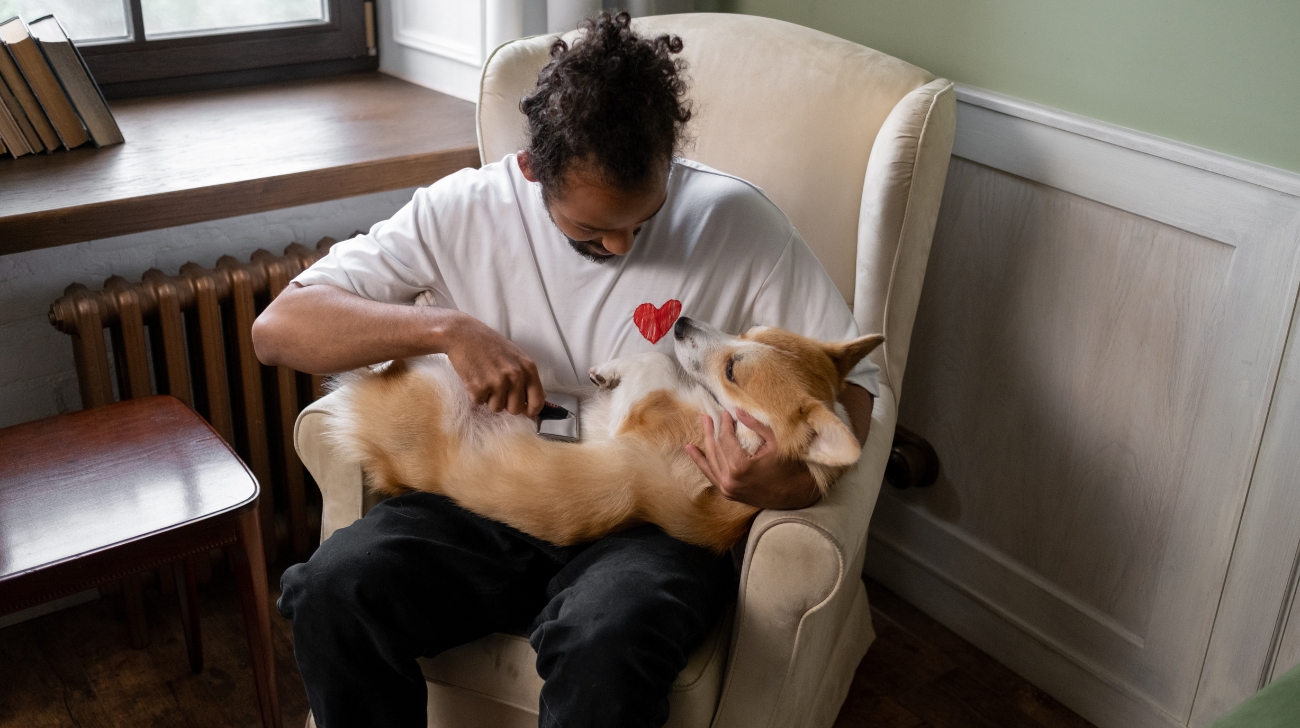Brushing your dog regularly is essential for maintaining a healthy coat, preventing tangles, and ensuring their skin stays in top condition. But with so many types of dog brushes on the market, how to choose the right dog brush for your pet can be a challenge.
In this guide, we’ll explore everything you need to know about selecting the perfect dog brush, the benefits of regular grooming, and tips for brushing your dog effectively. The best brush for double-coated dogs ensures efficient removal of loose undercoat hair while maintaining the health of the outer coat.
Why Do You Need the Right Type of Dog Brush?
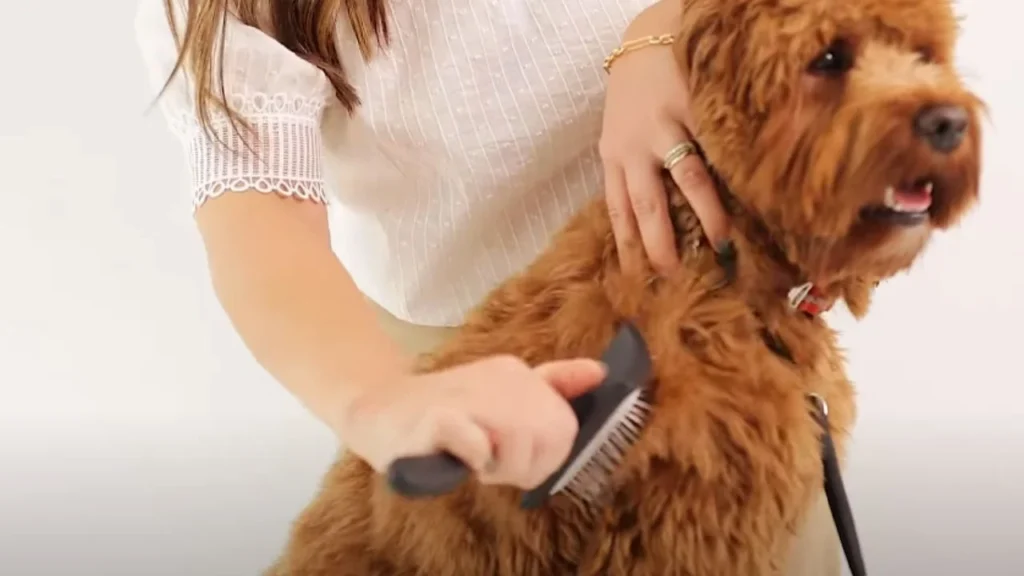
Choosing the right type of dog brush is essential for maintaining your pet’s coat health, comfort, and overall well-being. Different brushes are designed to address specific coat types and grooming needs.
For example, a slicker brush is ideal for removing tangles and mats in long-haired or curly-coated breeds, while a bristle brush works best for short-haired dogs, removing loose fur and distributing natural oils to enhance coat shine. Using the wrong brush can cause discomfort, skin irritation, or even pain, particularly in dogs with sensitive skin or those prone to matting.
Regular brushing with the appropriate brush helps prevent matting and tangling, which can lead to skin infections and discomfort if left untreated. Moreover, the right brush allows you to remove dirt, debris, and loose hair efficiently, reducing shedding and keeping your home cleaner. It also helps stimulate blood circulation and promotes a healthy, shiny coat, providing a pleasant grooming experience that strengthens the bond between you and your dog.
The Ultimate Guide to Choosing the Right Dog Brush for Your Pet
Choosing the right dog brush for your pet is a crucial part of maintaining your pet’s coat health and ensuring a comfortable grooming experience. Different dog breeds and coat types require specific types of brushes to remove loose hair, prevent matting, and keep your dog looking and feeling their best. Here’s a comprehensive guide to help you choose the perfect brush for your furry friend.
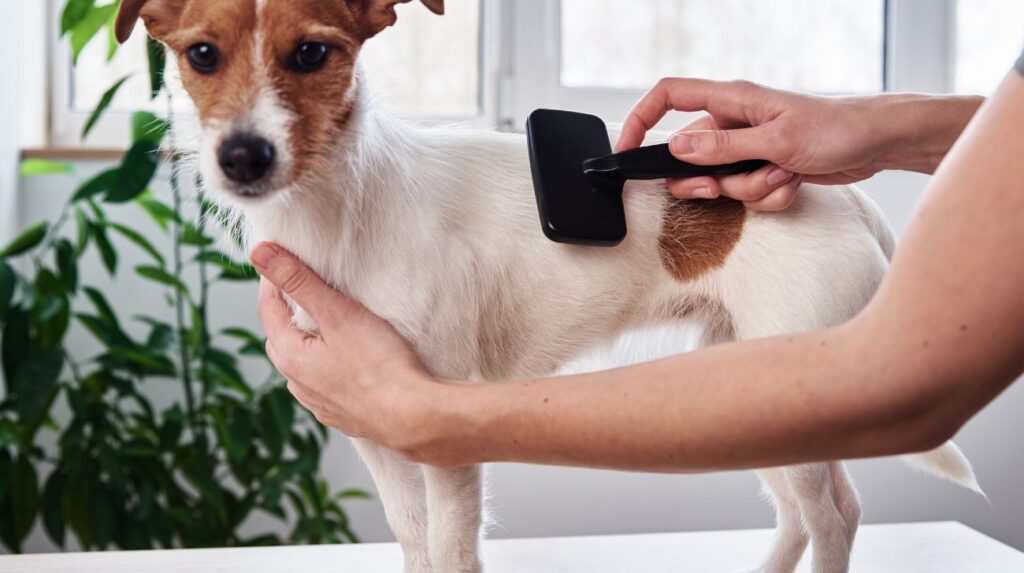
1. Understand Your Dog’s Coat Type
The first step in choosing the right dog brush for your pet is understanding your dog’s coat type. Dogs have different types of coats that vary by breed, including short, long, curly, and wiry. Each type requires a specific grooming tool.
- Short-haired Breeds: These dogs generally have smooth coats that lie close to their bodies. They benefit most from bristle brushes or rubber brushes that can remove loose hair and dander while stimulating the skin.
- Long-haired Breeds: Breeds with long hair, such as Afghan Hounds or Shih Tzus, require brushes like slicker or pin brushes that can help detangle and smooth their coat.
- Curly or Wiry Coats: Dogs with curly or wiry coats, like Poodles or Terriers, benefit from slicker brushes designed to navigate the unique texture and prevent matting.
Understanding the specific needs of your dog’s coat will help you choose the most effective brush for grooming. Learn how to get dog hair out of a blanket using practical tips and tools to keep your home fur-free.
2. Know the Different Types of Dog Brushes
There are several types of dog brushes, each serving a unique purpose:
- Slicker Brushes: These brushes have fine wire bristles that are angled to avoid scratching the skin. They are ideal for removing mats and tangles from medium to long-haired dogs. However, use them gently, as they can cause discomfort if used with too much pressure.
- Bristle Brushes: Suitable for dogs with short, smooth coats, bristle brushes help remove loose hair and dirt while also distributing natural oils, giving the coat a shiny appearance.
- Pin Brushes: Similar to human hairbrushes, pin brushes have wire pins with rounded tips and are used primarily on long-haired breeds to smooth out the coat and remove debris.
- Rubber Brushes: These brushes are great for dogs with short, smooth coats. They help remove loose fur and provide a gentle massage, enhancing circulation and promoting healthier skin.
- De-shedding Tools: Designed specifically for heavy shedders, these tools can reach the undercoat to remove loose hairs effectively, reducing shedding around the home.
- Comb Brushes: These are ideal for tackling small mats and tangles, particularly in hard-to-reach areas. They come in various tooth lengths and spacing to suit different coat types.
3. Consider Your Dog’s Shedding Habits
If your dog sheds a lot, consider using a de-shedding tool like the FURminator, which is designed to reach deep into the undercoat and remove loose hairs before they fall out. These tools are especially useful for breeds like German Shepherds, Golden Retrievers, and Huskies, which tend to shed heavily. For dogs with curly or wavy coats, like Goldendoodles, using a top detangling brush for Goldendoodle coats helps prevent matting and keeps their fur smooth and healthy.
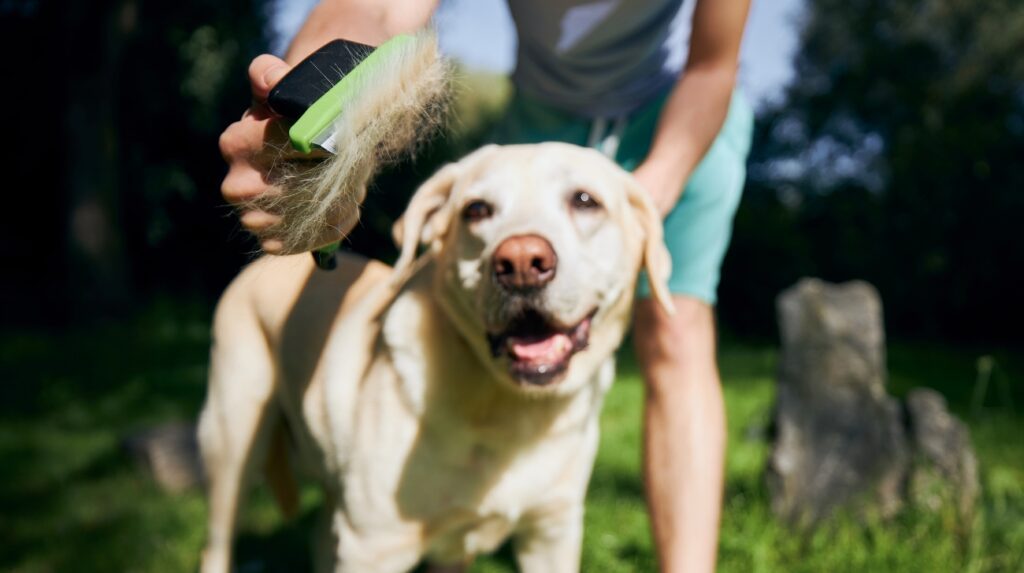
4. Assess Skin Sensitivity
If your dog has sensitive skin, opt for brushes with softer bristles or rubber-tipped pins. This reduces the risk of skin irritation. Additionally, always brush gently, particularly when dealing with tangles, to avoid discomfort. Rubber brushes are excellent for sensitive dogs as they provide a gentle massage while grooming.
How often you groom your dog will influence the type of brush you should choose. For daily grooming, a bristle or rubber brush that is easy to clean and comfortable to hold is ideal. If your dog only needs grooming occasionally, a slicker or pin brush might be more appropriate to handle longer sessions.
Read more: Explore the different types of brushes for dogs to find the ideal grooming tool for your pet’s specific coat type.
5. Take Bath Time into Account
If your dog enjoys bath time, consider a rubber brush that can be used both in and out of the bath. Rubber brushes are ideal for distributing shampoo and conditioner evenly while also providing a gentle massage that helps relax your dog and makes bath time more enjoyable.
If you’re unsure which brush is best for your dog, consult with a professional groomer or your veterinarian. They can offer personalised recommendations based on your dog’s specific breed, coat type, and any underlying skin conditions. This expert advice can help ensure you are using the right grooming tools and techniques.
Identify the best shedding brush for short-haired dogs to maintain a clean coat and reduce loose fur around your home.
6. Experiment and Observe
Finding the right brush might require some trial and error. Observe how your dog reacts to different brushes and adjust accordingly. Start with a soft-bristle brush for sensitive areas and gradually try firmer brushes if needed. Remember, your dog’s comfort is key to a positive grooming experience.
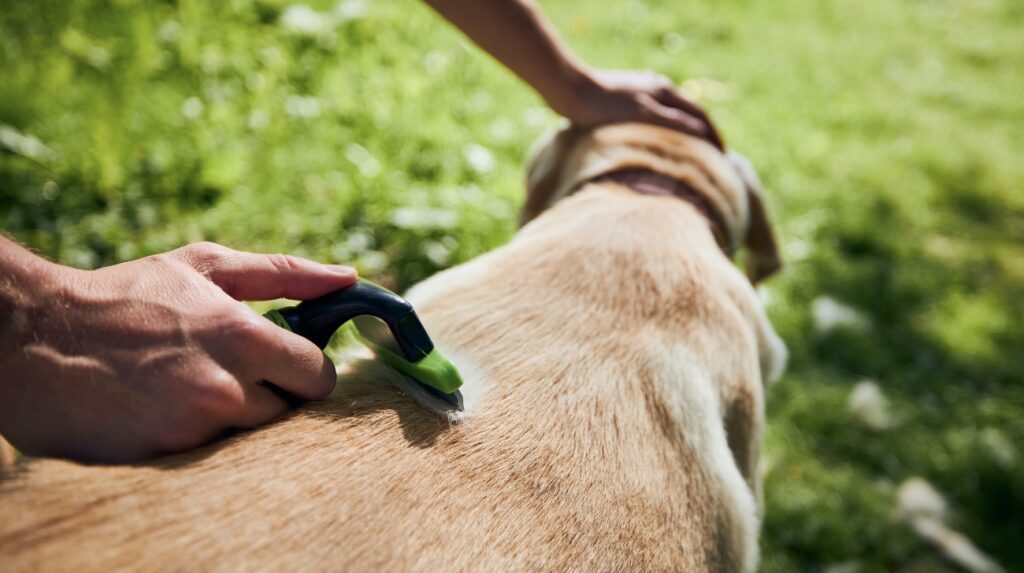
Choose brushes made from durable, eco-friendly materials that will last longer and minimize environmental impact. Quality brushes not only perform better but also provide a more comfortable grooming experience for your dog. Options like the Bamboobies Eco-Friendly Grooming Brush offer both sustainability and durability. Find the best deshedding tools for dogs to effectively manage shedding and keep your dog’s coat healthy.
7. Align with Your Budget
While quality is important, there are effective brushes available at various price points. Consider balancing cost with quality to find a brush that meets both your dog’s needs and your budget.
Decide whether to brush your dog when their coat is wet or dry based on their coat type and the brush you use. For example, brushing with a rubber brush during a bath can help distribute shampoo and remove loose hair, while dry brushing with a slicker or bristle brush is ideal for regular grooming sessions.
8. Recognise Professional Groomers’ Tools
Professional groomers use a range of brushes tailored to the specific needs of different breeds. Slicker brushes, pin brushes, bristle brushes, and de-shedding tools are common choices. These tools are selected based on durability, comfort, and effectiveness in handling different coat types and grooming challenges.
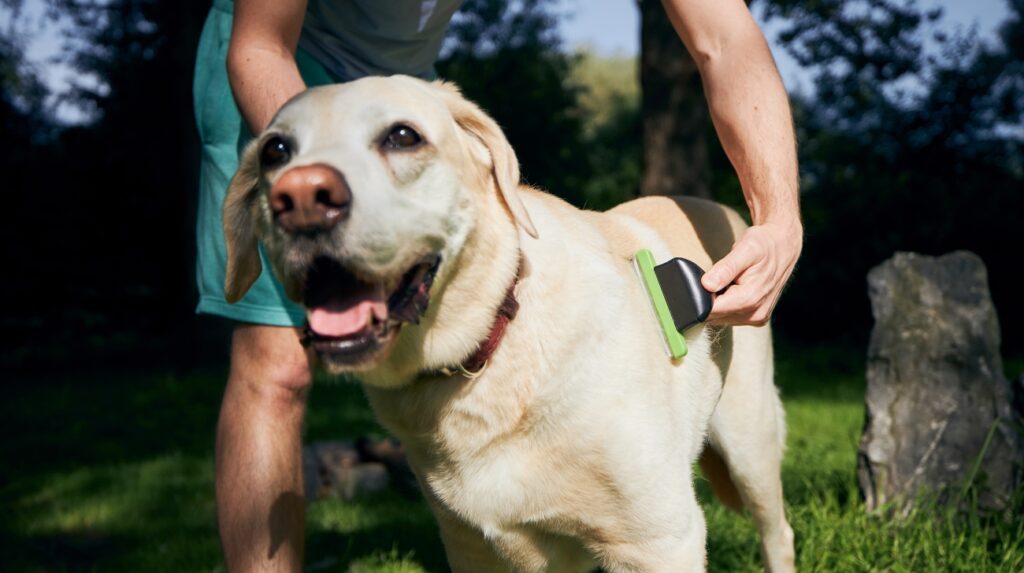
Read more: Understand whether you can safely use hair clippers on your dog and the differences between human and dog grooming tools.
Making the Right Choice
Selecting the right brush for your dog is essential for maintaining a healthy coat and providing a pleasant grooming experience. By considering factors like your dog’s coat type, shedding habits, skin sensitivity, and your grooming routine, you can choose a brush that meets your pet’s specific needs. Remember, the right brush is more than just a tool; it’s a means to bond with your pet, enhance their well-being, and keep them looking their best. Hope so, now you know how to choose the right dog brush for your pet.
With this comprehensive guide, you’re now equipped to make an informed decision and enjoy a successful grooming experience with your furry friend. Happy grooming! Discover reasons why your dog might hate being brushed and how to make grooming a more pleasant experience.

